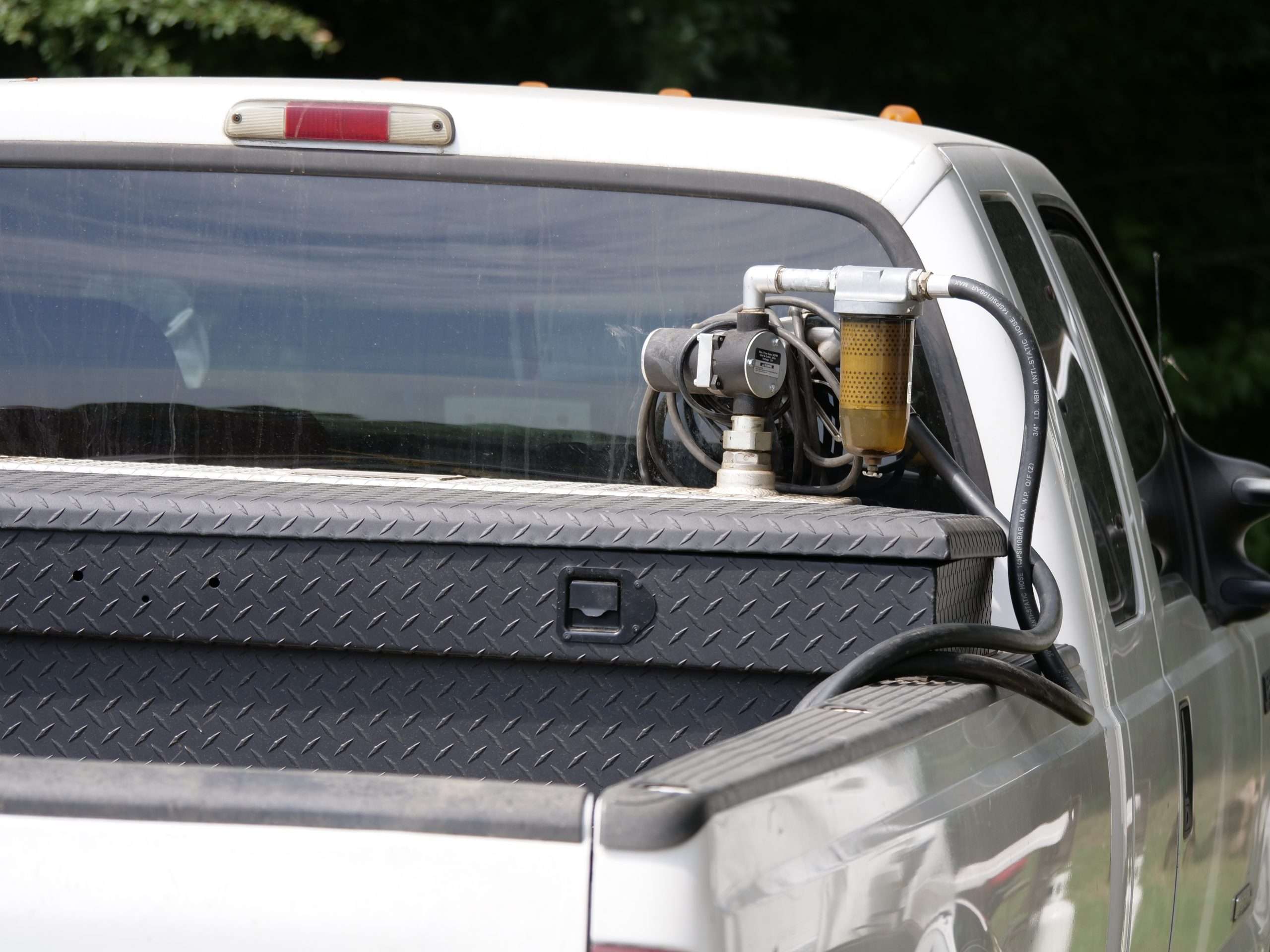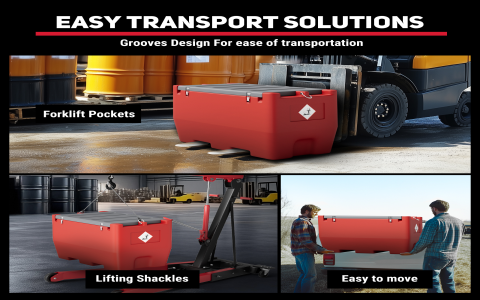Portable Truck Bed Fuel Tanks with Pump: A Complete Guide
Portable Truck Bed Fuel Tanks with Pump: A Complete Guide
If you’re a truck owner who spends long hours on the road or works in remote locations, running out of fuel isn’t just an inconvenience; it’s a major problem that can halt your work and cost you money. That’s where a portable truck bed fuel tank with a pump becomes an essential piece of gear. This guide will walk you through everything you need to know about these versatile fuel solutions, from choosing the right model to using it safely and effectively. We’ll cut through the marketing jargon and give you the straight facts, just like one trucker talking to another.
Why You Need a Portable Fuel Tank for Your Truck
Think of a portable fuel tank as your personal gas station on the go. It’s not just for emergency roadside situations. For contractors, farmers, and long-haul travelers, these tanks provide a critical reserve of fuel. You can power your primary vehicle, run job site equipment like generators or welders, and avoid costly trips to distant fuel stations. The integrated pump is the key feature that elevates a simple storage container into a practical fueling system. Instead of relying on gravity or messy siphoning, a pump allows for a clean, controlled, and fast transfer of diesel or gasoline, making the process efficient and much safer.

Key Features to Look For in a Fuel Transfer Tank
Not all portable truck bed fuel tanks are created equal. When you’re investing in one, pay close attention to these critical aspects to ensure you get a product that’s reliable and suited to your needs.
- Material and Durability: Most high-quality tanks are made from cross-linked polyethylene (XLPE) or aluminum. XLPE is rotationally molded, making it incredibly impact-resistant and rust-proof. Aluminum tanks are lightweight and also corrosion-resistant but can be more prone to denting. Look for UV-resistant materials to prevent degradation from sun exposure.
- Capacity and Size: Capacity ranges from 25 to 100 gallons. Your choice should balance your fuel needs with the available space in your truck bed. A 50-gallon tank is a popular choice for many full-size trucks, offering a substantial reserve without occupying the entire bed.
- Pump Type and Power Source: This is where the real decision lies. You’ll find 12-volt DC powered pumps that plug into your truck’s cigarette lighter or alligator clips, and manual hand-operated pumps. The 12V DC pumps are far more convenient for transferring large volumes, with typical flow rates between 10-15 gallons per minute (GPM). Ensure the pump is designed for the specific fuel you’re using (diesel or gasoline).
- Safety Certifications: Never compromise on safety. Look for tanks that are certified by the Underwriters Laboratories (UL) or meet the standards of the U.S. Department of Transportation (DOT). Features like a built-in vent and automatic shut-off on the pump hose are crucial for preventing spills and overflows.
Top Portable Fuel Tank Brands: A Side-by-Side Look
To help you make an informed decision, here’s a comparison of some of the most trusted brands in the industry. This table breaks down the key differences at a glance.
| Brand & Model | Capacity (Gal.) | Material | Pump Type | Notable Features |
|---|---|---|---|---|
| Transfer Flow 50-Gallon | 50 | Aluminum | 12V DC (Optional) | DOT compliant, multiple inlets, highly customizable. |
| RDS 55-Gallon Auxiliary Tank | 55 | XLPE | 12V DC Transfer Pump | Excellent value, includes a pre-wired harness and nozzle. |
| Scepter 54-Gallon Military Fuel Caddy | 54 | HDPE | Manual Hand Pump | Extremely durable, MIL-SPEC design, no power required. |
| Northern Tool + Equipment 35-Gallon | 35 | Steel | 12V DC Pump Included | Budget-friendly option, compact size for smaller beds. |
Installation and Safe Operating Practices
Proper installation and use are non-negotiable. A poorly secured tank is a hazard. Always use high-quality ratchet straps or a dedicated mounting system to tie the tank down securely in your truck bed. When positioning it, ensure it doesn’t block your rearview mirror.
For safe operation, always ground the tank before and during fueling to dissipate static electricity—a major fire risk. Operate in a well-ventilated area, away from any open flames or sparks. It’s also a wise practice to keep a Type B fire extinguisher rated for flammable liquids within easy reach. According to the National Fire Protection Association (NFPA), improper handling of flammable liquids contributes to thousands of fires annually. Don’t become a statistic.
Expert Insight: Choosing the Right System
We spoke with John Miller, a certified equipment specialist with over 20 years of experience in off-road and heavy-duty vehicle support. He emphasized the importance of matching the pump to the task: “A lot of folks buy a tank based on capacity alone and overlook the pump. For frequent use with diesel equipment, a robust 12V pump is worth every penny. It reduces transfer time from 15 minutes to under two, which adds up over a week. For gasoline, ensure every component, including the hose, is compatible to avoid degradation.” This practical advice underscores the need to view the tank and pump as an integrated system.
Frequently Asked Questions
Q: Are portable truck bed fuel tanks legal in all states?
A: Laws vary by state, particularly regarding the transportation of gasoline. Most states allow DOT-approved containers for diesel without issue, but gasoline is more heavily regulated due to its higher flammability. It is your responsibility to check with your local state’s Department of Public Safety or DMV for specific regulations. Generally, tanks under 119 gallons for diesel are less restricted.

Q: Can I use one tank for both diesel and gasoline?
A: Absolutely not. You must dedicate a tank and its entire fuel transfer system to one type of fuel. Cross-contamination can severely damage engines and is a significant safety risk. Clearly label your tank and pump to avoid any potentially disastrous mix-ups.
Q: How do I maintain my portable fuel tank and pump?
A: Simple maintenance will extend its life. Periodically inspect the tank for cracks or damage. For the pump, run a fuel stabilizer through it if it will be stored for long periods. Keep the filter screen clean, and always store the unit with an empty pump hose to prevent damage to the internal components.
Q: What’s the real-world fuel savings?
A: The savings come from efficiency, not cheaper fuel. A U.S. Department of Energy report notes that idling and detours for fuel waste significant time and resources. By buying fuel in bulk and having it on-site, you reduce non-billable travel time and can take advantage of lower bulk fuel prices, leading to substantial annual savings for businesses.
Final Thoughts
Investing in a quality portable truck bed fuel tank with a pump is a smart move for any serious truck user. It provides independence, enhances productivity, and, when used correctly, adds a layer of safety to your operations. By focusing on certified safety features, the right capacity, and a reliable pump, you’ll find a solution that pays for itself by keeping you on the road and on the job. Do your homework, prioritize safety, and you’ll have a trusted tool for years to come.

Sources:
1. National Fire Protection Association (NFPA). “Flammable and Combustible Liquids Code.” https://www.nfpa.org/
2. U.S. Department of Energy, Alternative Fuels Data Center. “Idling Reduction for Commercial Vehicles.” https://afdc.energy.gov/








